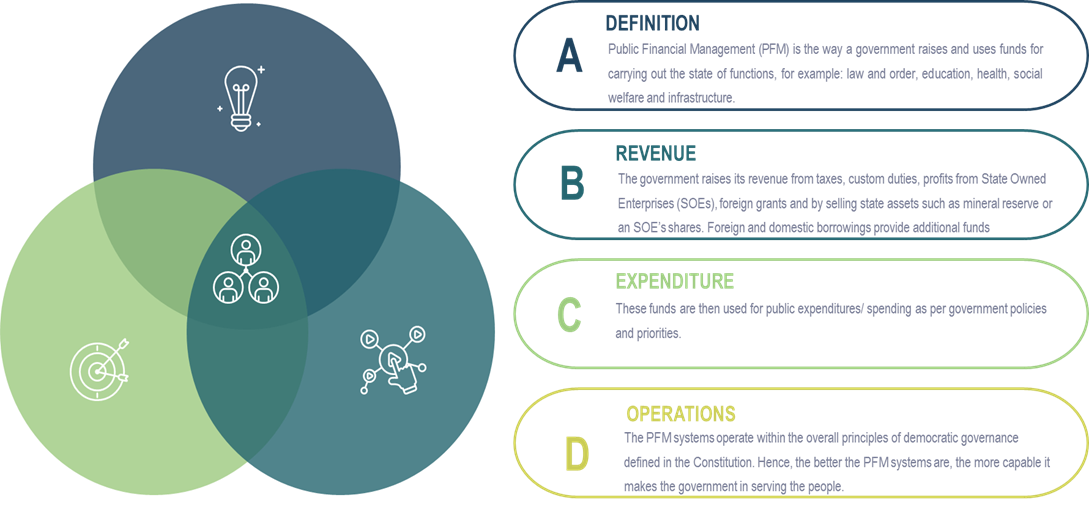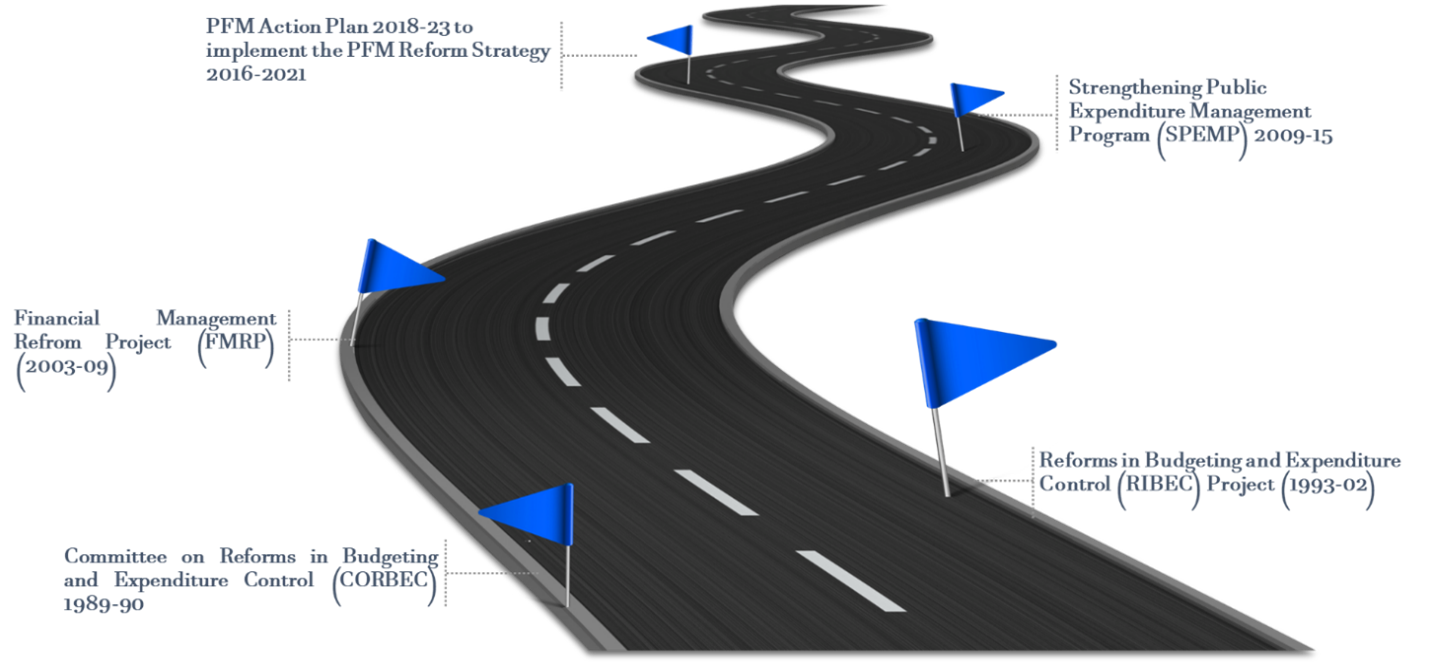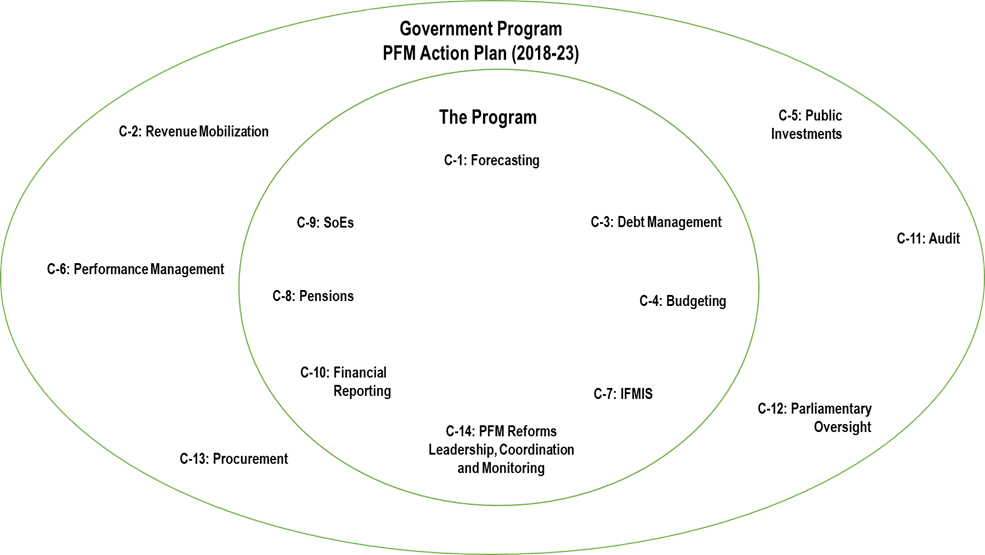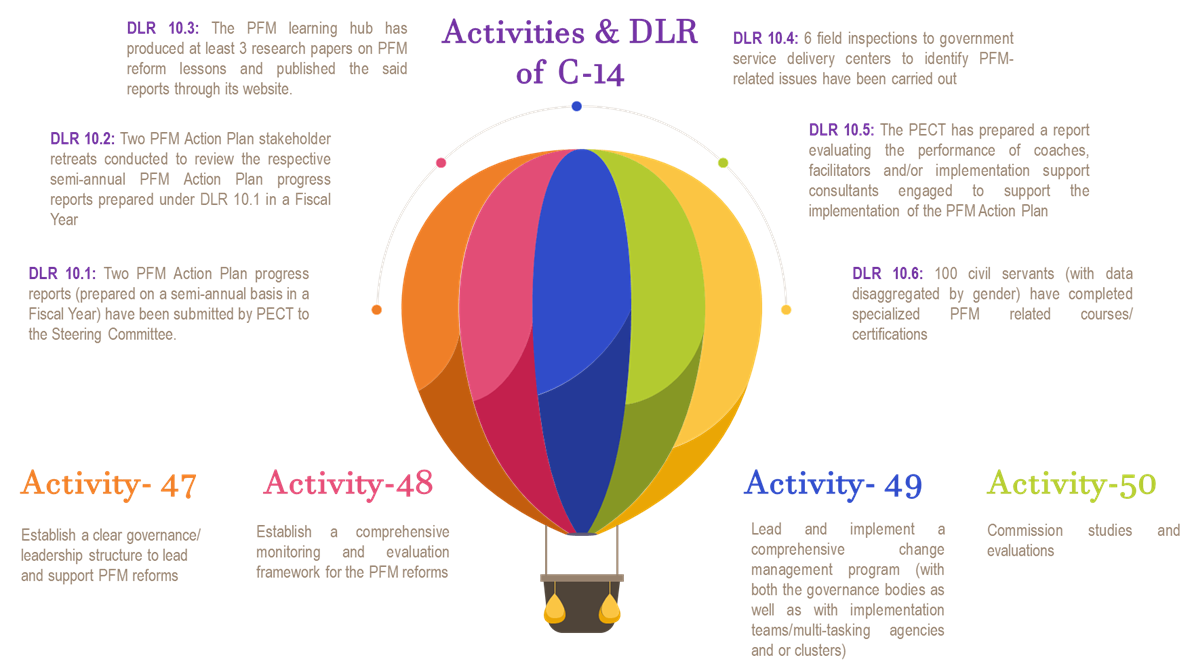Background

Background:
The Bangladesh Public Financial Management (PFM) Reform Strategy (2016-21), approved by the Minister of Finance in August 2016, clearly sets out the key goals of the PFM reforms and identifies the priority reform actions. The Strategy was developed by a cross-institutional team from the Ministry of Finance, the Office of the Comptroller and Auditor General, the Planning Commission, and the National Board of Revenue, among others. A PFM Action Plan (2018-23) has been subsequently approved, to support effective implementation of the Strategy. This PFM Action Plan provides the implementation roadmap for those priority actions with clear institutional responsibilities, cost-benefit analysis of sub-activities, and results indicators to monitor the successful implementation. The PFM Action Plan also elaborates on the governance structure for reforms and the change management approach introduced earlier in the Strategy. Following figure shows the PFM reform journey in brief-

A PFM Action Plan (2018-23) was approved, to support effective implementation of the PFM Reform Strategy (2016-21). The Action Plan fulfills the need for an operational document, and as such it is consistent and should be read with the Strategy to get a complete understanding of the PFM reforms in Bangladesh. This PFM Action Plan provides:
- The implementation roadmap for those priority actions with clear institutional responsibilities;
- Cost-benefit analysis of sub-activities; and
- Results indicators to monitor the successful implementation;
- Elaboration on the governance structure for reforms and the change management approach.
Justification of Scheme on PFM Reforms Leadership, Coordination and Monitoring
Effective Change Management is crucial to success of the public financial reform agenda in Bangladesh. Having a plan does not mean that all activities automatically get implemented, without any challenges along the way or space for course-correction. Change management is a process of helping people to understand the need for change and to motivate them to take actions which result in sustained changes in behavior. Change management needs to be anchored in a suitable and effective governance structure, ensuring adequate monitoring and creating the space for learning and course-correction during implementation. To that end a component on ‘PFM reforms, leadership, coordination and monitoring (C-14)’ explicitly addresses this need for change management and support all other 13 components of the PFM Action Plan as shown in the picture below, including, but not limited to the 8 components of a World Bank lending program.
Change management support and adequate governance supporting all components is crucial to align between and learn across all stakeholders and development partners involved in the overall PFM work in the country and to avoid parallel structures wherever possible. With the plans firmly in place and the Government ready to implement, 7 Project Implementation Teams (PITs) will be established under the World Bank lending program. For the other 6 components that are part of the Government program there are PITs or equivalent structures, so there will be a total of 13 implementation teams that benefit from the 14th component on ‘PFM reforms Leadership, Coordination and Monitoring.
Objective of the Scheme
PFM reform agenda is aimed at improving the functionality, efficiency, and effectiveness of the PFM systems, introducing changes in PFM systems, processes, and practices, and enabling better coordination among various stakeholders of the PFM systems. Thus, component 14 of the PFM Action Plan spells out all details and requirements to begin its implementation, including the establishment of the PFM governance structure to lead and support the reforms.Duration of Scheme and Implementation Period


